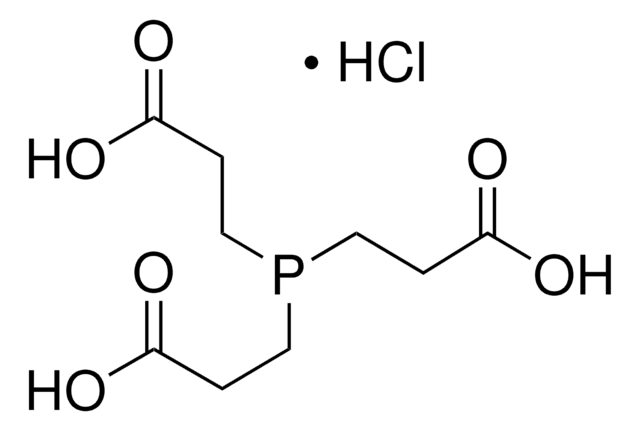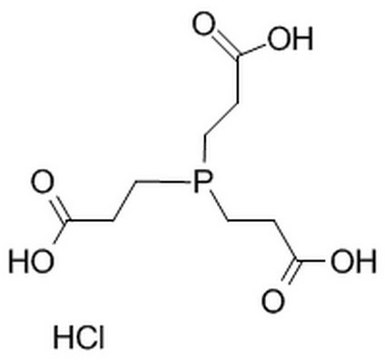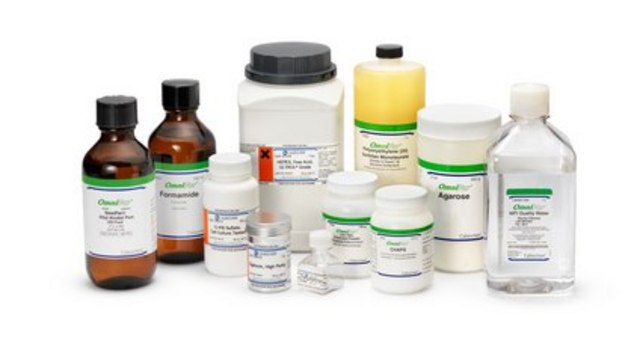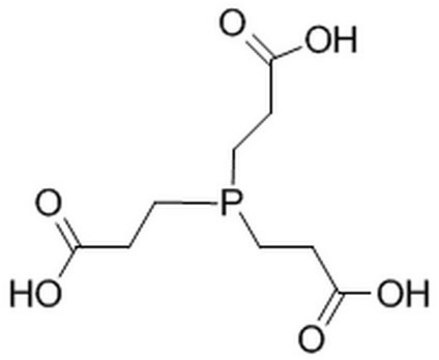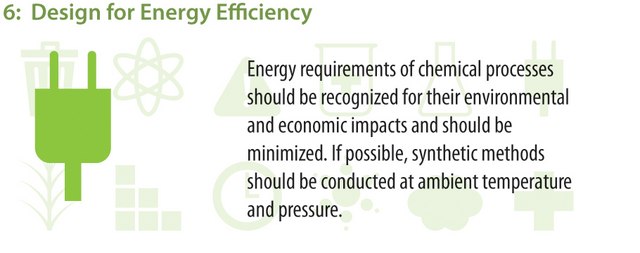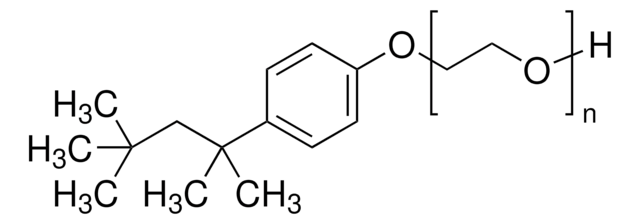52486
Tris(2-carboxyethyl)phosphine, immobilized on Agarose CL-4B
Sign Into View Organizational & Contract Pricing
All Photos(1)
Synonym(s):
TCEP-Agarose, Tris(2-carboxyethyl)phosphine-Agarose
UNSPSC Code:
12352204
NACRES:
NA.25
Recommended Products
Quality Level
storage temp.
2-8°C
Application
Tris(2-carboxyethyl)phosphine, immobilized on agarose CL-4B may be used in preliminary off-line experiments to study its ability to cleave disulfide bonds by both under flow conditions using sequential injection analysis (SI). It may also be used as a reducing agent in bio-tests for disrupting the disulfide bonds within and between the proteins.
Biochem/physiol Actions
Tris(2-carboxyethyl)phosphine also referred to as TCEP reduces the disulfides by the usual mechanism of reduction of disulfides by phosphines in water. Tris(2-carboxyethyl)phosphine, immobilized on Agarose CL-4B,Trialkylphosphines (TCEP) are highly effective agents for reducing disulfide bonds in proteins, peptides and other disulfide bondcontaining molecules and are relatively non-reactive toward other functional groups. The trialkylphosphine TCEP was first described by Levison et al. as an odorless and efficient reductant of alkyl disulfides over a wide pH range. TCEP is stable in aqueous solutions and does not undergo the rapid oxidation that often occurs with other reducing agents such as dithiotreitol (DTT) and β-mercaptoethanol (BME, 2-ME). TCEP does not interfere with commonly used sulfhydryl-reactive reagents (e.g., maleimide crosslinkers). Nevertheless, many protocols require recovery of the reduced sample separate from the reducing agent. Our Tris(2-carboxyethyl)phosphine, immobilized on Agarose CL-4B eliminates the need to use laborious and troublesome gel filtration methods to separate the reduced sample from the reducing agent. Immobilized TCEP Disulfide Reducing Gel may be adapted conveniently to a variety of scales and formats. Examples are given for batch, spin cup column and gravity-flow column procedures. For small-scale reductions, the most complete sample recovery is made using the spin-cup column procedure (see Related Thermo Scientific Products Section).
Analysis Note
Bio-tests
Gel has an effective TCEP concentration ≥8 μmol/mL gel
Gel has an effective TCEP concentration ≥8 μmol/mL gel
WGK
WGK 3
Flash Point(F)
Not applicable
Flash Point(C)
Not applicable
Certificates of Analysis (COA)
Search for Certificates of Analysis (COA) by entering the products Lot/Batch Number. Lot and Batch Numbers can be found on a product’s label following the words ‘Lot’ or ‘Batch’.
Already Own This Product?
Find documentation for the products that you have recently purchased in the Document Library.
Preparation of Avidin Conjugates
Haugland, R.P. and Blalgat, M.K et al.
Methods in Molecular Biology, 189-190 (1998)
On-line cleavage of disulfide bonds by soluble and immobilized tris-(2-carboxyethyl)phosphine using sequential injection analysis
Tzanavaras PD, et al.
Talanta (2012)
Burns, J.A.
The Journal of Organic Chemistry, 56, 2648-2648 (1991)
J C Han et al.
Analytical biochemistry, 220(1), 5-10 (1994-07-01)
The concentration of tris(2-carboxyethyl)phosphine (TCEP) can be conveniently determined by measuring the amount of 2-nitro-5-thiobenzoate (NTB) formed after reaction with 5,5'-dithiobis(2-nitrobenzoic acid) (DTNB). This method utilizes the fact that TCEP reduces DTNB rapidly and stoichiometrically to generate two equivalents of
Reductive cleavage of cystine disulfides with tributylphosphine.
U T Rüegg et al.
Methods in enzymology, 47, 111-116 (1977-01-01)
Our team of scientists has experience in all areas of research including Life Science, Material Science, Chemical Synthesis, Chromatography, Analytical and many others.
Contact Technical Service